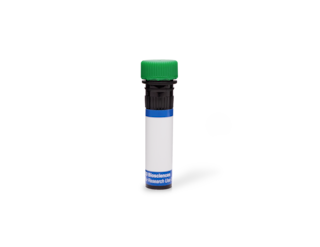-
Reagents
- Flow Cytometry Reagents
-
Western Blotting and Molecular Reagents
- Immunoassay Reagents
-
Single-Cell Multiomics Reagents
- BD® OMICS-Guard Sample Preservation Buffer
- BD® AbSeq Assay
- BD® Single-Cell Multiplexing Kit
- BD Rhapsody™ ATAC-Seq Assays
- BD Rhapsody™ Whole Transcriptome Analysis (WTA) Amplification Kit
- BD Rhapsody™ TCR/BCR Next Multiomic Assays
- BD Rhapsody™ Targeted mRNA Kits
- BD Rhapsody™ Accessory Kits
- BD® OMICS-One Protein Panels
- BD OMICS-One™ WTA Next Assay
-
Functional Assays
-
Microscopy and Imaging Reagents
-
Cell Preparation and Separation Reagents
Old Browser
This page has been recently translated and is available in French now.
Looks like you're visiting us from {countryName}.
Would you like to stay on the current location site or be switched to your location?
BD Transduction Laboratories™ Purified Mouse Anti-Human hCNK1
Clone 46/hCNK1 (RUO)

Western blot analysis of hCNK1 on a A431 cell lysate (Human epithelial carcinoma; ATCC CRL-1555). Lane 1: 1:250, lane 2: 1:500, lane 3: 1:1000 dilution of the mouse anti-human hCNK1 antibody. hCNK1 has a calculated molecular weight of 79 kDa, but may be observable migrating at ~ 100 kDa.



Western blot analysis of hCNK1 on a A431 cell lysate (Human epithelial carcinoma; ATCC CRL-1555). Lane 1: 1:250, lane 2: 1:500, lane 3: 1:1000 dilution of the mouse anti-human hCNK1 antibody. hCNK1 has a calculated molecular weight of 79 kDa, but may be observable migrating at ~ 100 kDa.

Western blot analysis of hCNK1 on a A431 cell lysate (Human epithelial carcinoma; ATCC CRL-1555). Lane 1: 1:250, lane 2: 1:500, lane 3: 1:1000 dilution of the mouse anti-human hCNK1 antibody. hCNK1 has a calculated molecular weight of 79 kDa, but may be observable migrating at ~ 100 kDa.

Immunofluorescence staining of human endothelial cells.




Regulatory Status Legend
Any use of products other than the permitted use without the express written authorization of Becton, Dickinson and Company is strictly prohibited.
Preparation And Storage
Recommended Assay Procedures
Western blot: Please refer to http://www.bdbiosciences.com/pharmingen/protocols/Western_Blotting.shtml
Product Notices
- Since applications vary, each investigator should titrate the reagent to obtain optimal results.
- Please refer to www.bdbiosciences.com/us/s/resources for technical protocols.
- Caution: Sodium azide yields highly toxic hydrazoic acid under acidic conditions. Dilute azide compounds in running water before discarding to avoid accumulation of potentially explosive deposits in plumbing.
- Source of all serum proteins is from USDA inspected abattoirs located in the United States.
Companion Products


Proteins of the Ras superfamily play critical roles in the control of normal and neoplastic proliferation. These proteins relay signals from Tyr-kinases at the plasma membrane to the nucleus via a network of Ser/Thr kinases that includes the MAP kinase (Raf-MEK-ERK) pathway. Kinase suppressor of Ras (KSR-1) was discovered in Drosophila in a genetic screen that identified mutations that suppress constitutively active Ras mutants. Connector enhancer of KSR (CNK) was found in a similar screen to identify mutations that enhance the KSR- dependent phenotype. Drosophila CNK contains a sterile alpha motif (SAM), a conserved region in CNK (CRIC), and a PDZ domain in the N-terminal region, a proline-rich and a plecstrin homology (PH) domain in the central region, and a C-terminal Pro-rich domain. The human homologue of CNK (hCNK1) contains similar N-terminal and central domains, but is 713 amino acids in length compared to 1557 amino acids for Drosophila CNK. In Drosophila, the N-terminal region of CNK facilitates binding to RAS, while the C-terminal region inhibits RAS- and RAF-dependent signaling. Thus, CNK may be important for regulation of both RAS- and RAF-dependent signaling.
Development References (2)
-
Therrien M, Wong AM, Kwan E, Rubin GM. Functional analysis of CNK in RAS signaling. Cell. 1999; 96(23):13259-13263. (Biology). View Reference
-
Therrien M, Wong AM, Rubin GM. CNK, a RAF-binding multidomain protein required for RAS signaling. Cell. 1998; 95(3):343-353. (Biology). View Reference
Please refer to Support Documents for Quality Certificates
Global - Refer to manufacturer's instructions for use and related User Manuals and Technical data sheets before using this products as described
Comparisons, where applicable, are made against older BD Technology, manual methods or are general performance claims. Comparisons are not made against non-BD technologies, unless otherwise noted.
Please refer to Support Documents for Quality Certificates
Global - Refer to manufacturer's instructions for use and related User Manuals and Technical data sheets before using this products as described
Comparisons, where applicable, are made against older BD Technology, manual methods or are general performance claims. Comparisons are not made against non-BD technologies, unless otherwise noted.
For Research Use Only. Not for use in diagnostic or therapeutic procedures.